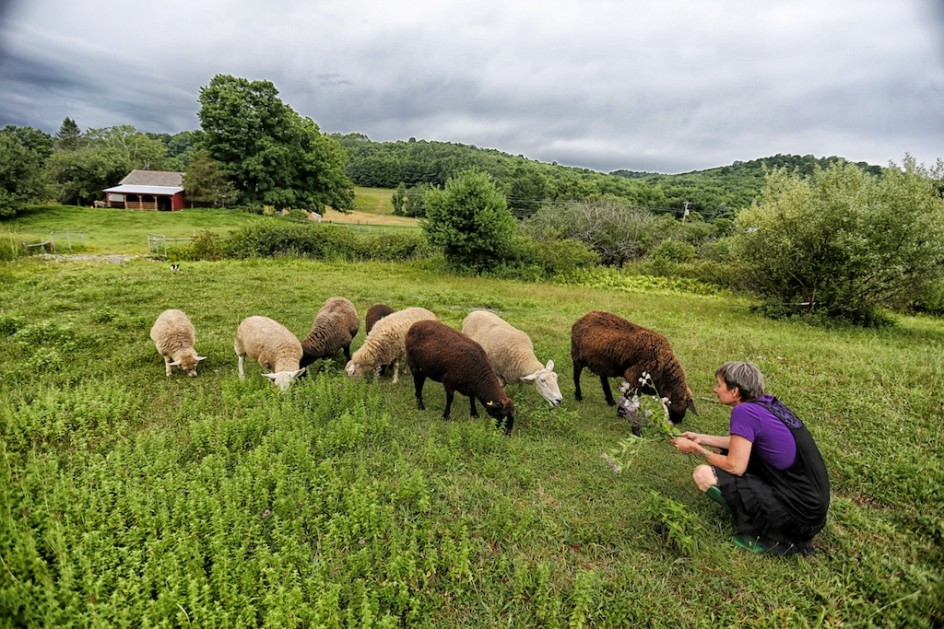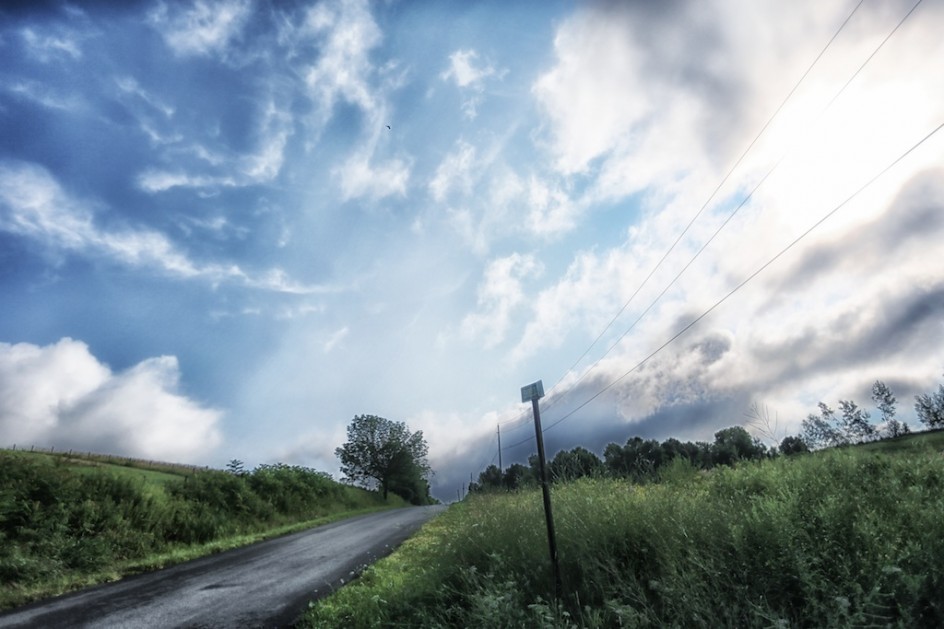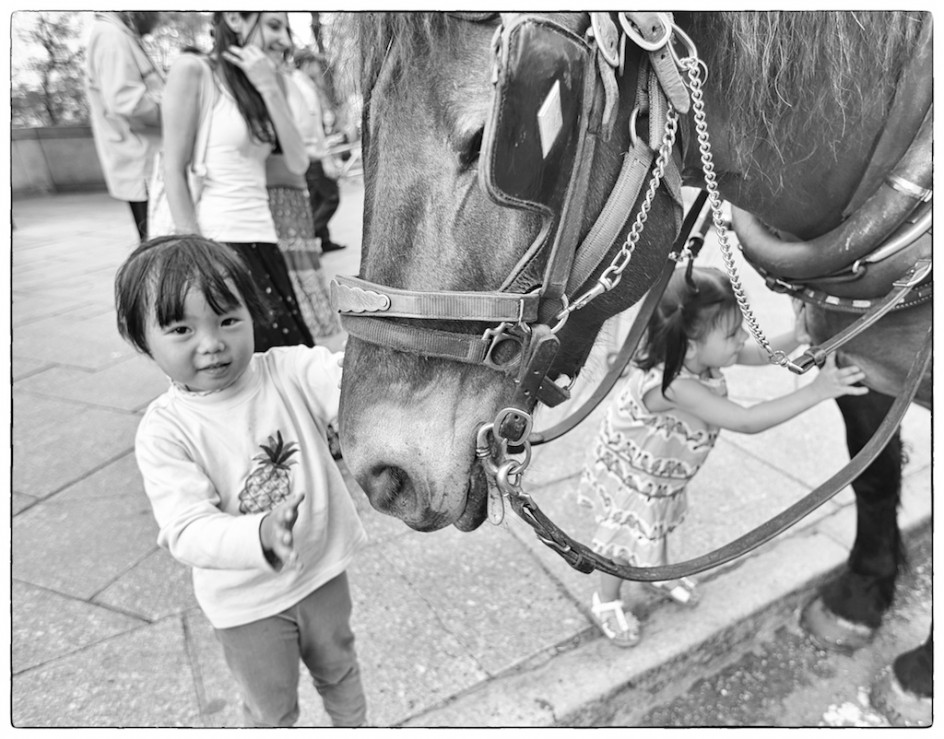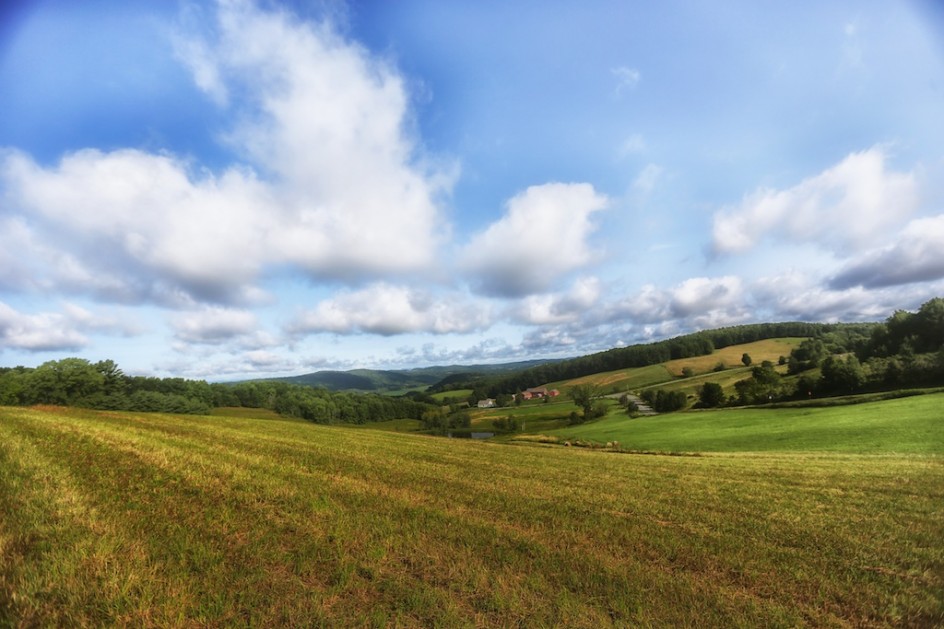
Day: July 29, 2014
Open Heart Surgery And The Silent Men: Recovery Journal, Vol. 30

I saw them when the ambulance brought me to my room in the hospital, the ward was filled with men, they were the silent men I had already heard much about, the men who get open heart surgery – it is mostly men – but who do not talk about it, not ever. Women talk about the silent men all the time – wives, daughters, mothers, sisters.
I saw it right away in the room I was in and the rooms around me. The men were quiet, they seemed depressed to me, they did not wish to bother the nurses with requests, they seemed too embarrassed, but they asked their wives to make their requests for them.
Few of them got out of bed unless prodded, and even then, they did not go far. They had no interest in walking, or talking much. They submitted humbly, even meekly, to the prodding and poking that are the routines of hospital wards. Some were younger than me, some older. Several of them told me they were “low,” they were stunned to have their hearts fail them, stricken at being unable to to do the things they had always done, uncertain about their lives, their health, their recovery and their future. “I couldn’t walk to the barn,” one told me, shaking his head. “I walked to the barn every morning for 60 years.” None of them wanted to talk about their upcoming surgery or even hear much about the details. They seemed discouraged to me, even defeated.
When their wives came to see them, the women often pulled up chairs next to the hospital beds, and the men and their wives would sit in silence mostly, looking up at the TV screens above the beds – the hospital charged for them to be turned on, I did not want mine turned on. The couples would sit quietly, on the eve of their great change, their great fear, sometimes holding hands, usually not, sitting in silence as they often did at home, I suspect, watching television.
I am not a silent man, mostly, I think, because I am a writer, and I have written a bunch of memoirs and talked openly about my life for many years. I had not encountered too many of the silent men before going to the hospital. In the ICU, I would see some of the same men in the recovery rooms all around me, they waved to me, cheered me on, wished me luck, applauded when I did my laps around the ward. They did not wish to get up, they did not wish to talk, they seemed depressed even broken to me, a state the nurses told me was very common after open heart surgery. Several of the nurses prepared me to get ready for it myself.
I talked to some of the silent men, they reminded me of the farmers I photograph sometimes. Men carry so much baggage, so much weight. It is sometimes impossible for them to feel so diminished and off-balance. They feel intensely responsible for their lives, for providing. It is crushing for them to have their bodies invaded and violated in so brutal and personal a way, degrading to have their bottoms wiped by young men and women, bewildering to be so helpless and dependent, often for the first time in their lives.
There is no more asexual feeling in the world than waking up in an intensive care unit with tubes and lines sticking out of your body, catheters in your private parts, monitors attached to your heart. It is hard to imagine ever making love again, or being a whole man again in any way. I visited Don in his recovery room, and I asked him how he was. “I don’t know what will become of me,” he said. “Will I ever be myself again? Can I take care of my work, my family?” A heart is a tough thing to break for anyone, I think it hits the silent men in a particular way, they have no vocabulary with which to handle it.
They do not know how to be scared, how to be vulnerable, how to ask for help and take it, to keep moving, to get up and walk and walk and walk, to turn off the TV, things that are all essential to recovery and healing. I think one of the most powerful moments of my recovery was when I had to go to the bathroom and looked up at my beautiful young nurse, younger than my daughter, standing there with some wipes. “Just do it,” she said, “I’m a professional.” I did it. At that moment, I surrendered to the process of healing, it was bigger than me.
I talk to Maria about how I am feeling all of the time, and another friend on the phone every day or so, and I value all of these conversations. I have become a silent man in some ways, I don’t talk about my surgery either, but I write about it every day, and that is often how I learn how I am feeling. I too feel violated and broken sometimes, bewildered and unsure. I feel for the silent men, they have plenty of feelings.
Healing is not, of course, just about medicine and walking, it is a state of mind. It is so hard for many men to do the very thing they most need to do to heal – to understand what they are feeling and to share what they are feeling with the people they can trust. Women seem to know how to do this, few men do. The silent men have hearts just as tender and sensitive as anyone, they feel the same things everyone feels, they do not have the words or the experience to talk about them. In my hospital ward I came to understand this, the silent men were eager to be with me, to listen to me, to talk to me when they could and in the way that they could. We understood one another, we shared something quite profound, even when we did not have the words.
There is a difference between being a silent man and unfeeling one. Silence, like fear, is just a space to cross. In open heart surgery, I think we all feel pretty much the same thing. We were a brotherhood bound in life.
Carriage Horse Morality: A Taxi Door, A Child’s Death

Here’s the sad, surreal reality I have found over seven months of researching and writing about the story of The New York Carriage Horses. There is really nothing there. This controversy should never have happened. The carriage horses belong in New York and are safe and well cared for there. The deeper you look into this painful issue, the less you find. This story represents the tritest, most contrived, pettiest and most mean-spirited part of our civic life, and the least meaningful issue in the world of animals. I am not a New Yorker, but I cannot imagine it has any real significance for the people of New York.
The carriage horse controversy is not worth one lost job, one lost horse, one taxpayer dollar, one hour of the mayor’s time, one piece of legislation from the City Council. I have known this for some time, it was evident after a few weeks, but my research this week into this story – one of the truly real and urgent stories about animals in New York – brings it into sharp focus for me, and hopefully, for you.
The effort to ban the carriage horses from the city is a disgrace and an injustice, it should never have happened.
__
In June of this year a carriage horse named Pumpkin had his bridle stuck in the carriage in front of him, broke loose and ran off on his regular run through Central Park. The horse stopped when the carriage driver jammed a carriage wheel against a taxi door in the park to make him stop. No one was injured in the incident, including the horse. The taxi door was damaged, and had to be replaced.
The incident has become a major focal point of the drive to ban the carriage horses from the city. The mayor of New York has cited it several times, it was major news in the city’s papers, TV news casts and media blogs for days, the TV comedian and host Bill Maher – member of the PETA board – has written about it as compelling evidence that the horses do not belong in New York City and are too dangerous there. A few years ago, the idea that this story was significant in any way – a horse ran on his well known path and was stopped – would have been laughable. It happened in thousands of communities every day.
In the bizarre and over-heated hysteria surrounding the carriage horses, and the newly fantasized idea of animals, it was major news, more nails in the carriage trade coffin.
Pumpkin’s ride is still featured daily on the websites of animal rights groups like NYClass and was the subject of at least a half a dozen press conferences organized by animal rights organizations using it to solicit donations and as fodder in the debate over whether the horses can remain in the city.
“Will it take the death of a tourist for the city to ban this unsafe, unsanitary and archaic tourist trade?,” Maher asked after Pumpkin’s ride.
—
It is difficult at times to look in the mirror of our society and see reflected again and again the idea that we seem to care so much more about animals – and in such a misguided way – than we do about the most vulnerable people in our world.
In 2011, a 4-year-old boy named Jayelin Graham was mauled to death by a family dog as he and two brothers played in a bedroom in their apartment in Brooklyn. The boy suffered multiple bite wounds on his head, neck and other parts of his body, said police.
There were no press conferences held to condemn the death of Jayelin Graham or to ask whether dogs should be banned from the city. Nor are there any blogs or websites featuring his photo, keeping his memory alive, or using his image to raise money for child welfare or dog safety. Bill Maher did not ask or need to ask if Graham’s death would cause the city to ban the presence of many thousands of dogs in New York City, many of whom severely injure adults and children there every year.
In 1998, the New York City Department of Health reported that 6568 bites were reported by doctors in the five boroughs of New York City, as mandated by law. (Many are believed to go unreported.) The upper extremities, lower extremities, and face were predominantly affected. The peak incidence occurred during the summer months and in children ages 7 to 9 years old.
According to the U.S. Centers for Disease Control (CDC), tentative dog bite figures for New York City in 2012 were 7,432, more than half involving children. The American Pediatric Association reports dog attacks on children to be both epidemic and “horrific,” since they often occur around the face, eyes and neck. Dog bites on children, says the CDC, are increasing throughout the country at a rate of 47 per cent a year.
(The CDC reports that 4.5 million Americans are bitten by dogs annually, and half of those bitten are children. One in five bitten, or approximately 885,000, need medical attention for their dog bite injuries, and 50 per cent of those bite victims are children. Last year, over 27,000 people in America were required to undergo reconstructive surgery to treat injuries suffered from dog bites. Children ages 5-9 years are the most likely to be bitten.)
DogsBite.org reports that on a daily basis, 1000 Americans need emergency medical treatment for a dog bite injury.
In a rational world, we could use the conflict over the horses to begin discussing not only the future of animals in our world, but also how our social and economic and cultural traditions sanction astonishing cruelty to humans, as we repeatedly evoke our righteousness in the name of being good to animals. And as we increasingly abuse the people who care for animals and work with them.
Psychologists and sociologists have long argued that a culture that is cruel to people can not, by definition, learn how to be good to animals. The bad breeding and abuse of some dog breeds who hurt people would seem a legitimate issue for an animal rights movement interested in the welfare of animals (or a city truly interested in people or animal welfare). You will not find a mention of it on their websites.
If PETA or NYClass really cares about cruelty, why have they ignored Jayelin Graham? Don’t the dog attacks on children speak to the welfare of animals as well as people? If we are truly concerned about animals, cruelty and abuse, how can we gather in mob outrage over Pumpkin’s ride and turn a blind eye to Jayelin’s death, which was almost completely ignored and quickly forgotten?
The carriage trade has existed in New York City for more than 150 years, and during that time, no human being has been killed or severely injured by a carriage horse. No child has ever been injured or killed by a horse. How does this idea of animal rights and morality work, this notion that the people of the carriage trade should be shut down when they have broken no laws, committed no crimes, violated no regulations, and when the horses have done no harm?
It seems to be all right for thousands of people to be harmed by dogs each year, many children severely disfigured, but we will pay no price and take no risk to keep the work horses, who have been part of human history for thousands of years, and in New York City for hundreds, around us? I wonder if this is so, I wonder if the mayor asked the people of New York if they are willing to take some risks to keep the horses in the city, what they would say. I believe they would say yes, and overwhelmingly. But they are not being given a chance to be heard.
I am willing to take the risk, as are many animal lovers. Dogs and horses both belong in New York, in our cities, suburbs, in our lives. The moral path is to find a way for it to work, as many dog owners have done in the city, as the carriage trade has done for the horses.
The most basic right of animals is to survive in our world, not to be driven from the earth so that unthinking human beings can feel righteous about themselves. It would seem from these statistics that the real work needs to be making dogs safer to be around for children, the big and gentle horses are not much of a threat to anything but the blood pressure of animal rights demonstrators and the mayor’s reputation for fairness and integrity.
Could it really be so that a banged up taxi door – or the fear that a horse might one day injure a tourist – would justify banning 200 horses from New York City and putting hundreds of people out of work, not to mention depriving hundreds of thousands of visitors and tourists, children and lovers an experience they have enjoyed for generations and that they love and are willing to pay for? If Maher is concerned about the tourists, why not ask them if they want the horses to stay, instead of deciding for them? I’d happily put money on the outcome of that vote.
Any scholar of animal history in America knows that when animals like horses lose their economic or working rationale for existing with humans, they disappear from their environment and from the world. They are exterminated. Animal rights groups in America have become the leading animal exterminators of our time. Countless species of animals have disappeared from the earth when there is no rational way or economic justification for them to work with humans.
When elephants disappear from circuses, or horses vanish from movie lots, or ponies from county fairs, meat chickens from farms, or carriage horses from New York, they are doomed, condemned to leave the world. They disappear forever, there is no bringing them back. We will never see them again. Few people can afford them any longer or risk the consequences of owning them. There is no way large draft horses with their enormous appetites can be kept in the world forever in a time of rapidly vanishing resources and struggling horse rescue farms. That is perhaps the cruelest myth in this sad story.
Jayelin Graham speaks to us of the twisted morality that threatens the carriage horses in New York and helps us to ignore the real victims of our ignorant and thoughtless ideas about animals. Although almost everyone in New York knows the name of Pumpkin and no one has heard of Jayelin Graham, he is more important than the taxi door that Pumpkin bent.
Walk To The Top Of The World

I woke up early this morning, full of energy and promise. I decided to walk to the top of the world, a beautiful hill not too far from my home, a steep hill, much steeper than I have walked. Maria fought against this, at first she refused to take me there, she said it was much too much, I said I would walk there myself, or hitchhike there, or take my car and drive. You cannot tell me where to walk, I said, suddenly feeling trapped and helpless.
She said she would take me there, but not to the steepest hill, to another one, steep enough, but not so long. We went there. It was a very tough walk for me, but I made it up the hill, I felt strong and confident, as I turned around to walk back, I knew I would pay for this walk the rest of the day, it was worth every bit of pain and exhaustion. We walked out into the hayfield, Red did some spectacular outruns in search of sheep, Maria carried my camera and I got to take some photos.
I loved this walk to the top of the world, it filled me with excitement, promise and the love of my life. There is so much beauty in the world, sometimes you have to walk up a steep hill to find it.
Poem: Filling The Cup With Hope

Every day, the cup of life is set before you,
you can fill it with hope or sorrow,
complaint or acceptance,
anger or understanding.
Think about this for a second:
Have you ever heard a bird,
say to the sun:
I am sorry for flying so low,
and so late.
Have you ever heard
a donkey or sheep tell
God, I am not worth much,
nobody cares for me,
my life is filled with woe and struggle.
This morning, the sun brushed against my cheek
the very first thing,
and my cup was right next to my bed,
shining and sparkling in the light.
This morning, I walked to the top of the world
with my dog, and I walked too long and too far,
in the crisp and warming sun.
I filled my cup with hope.
